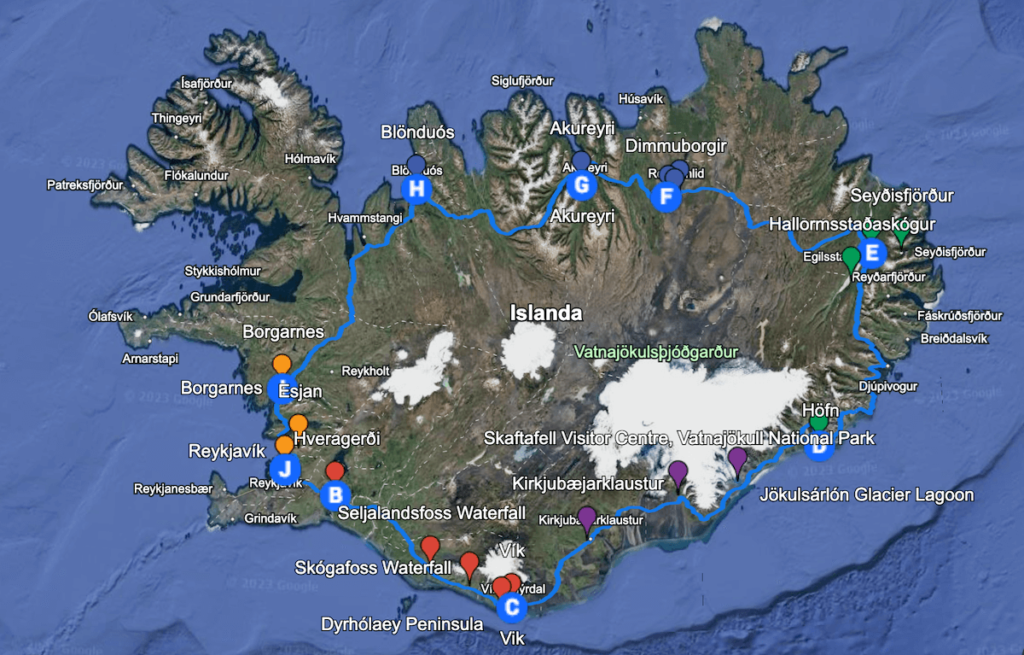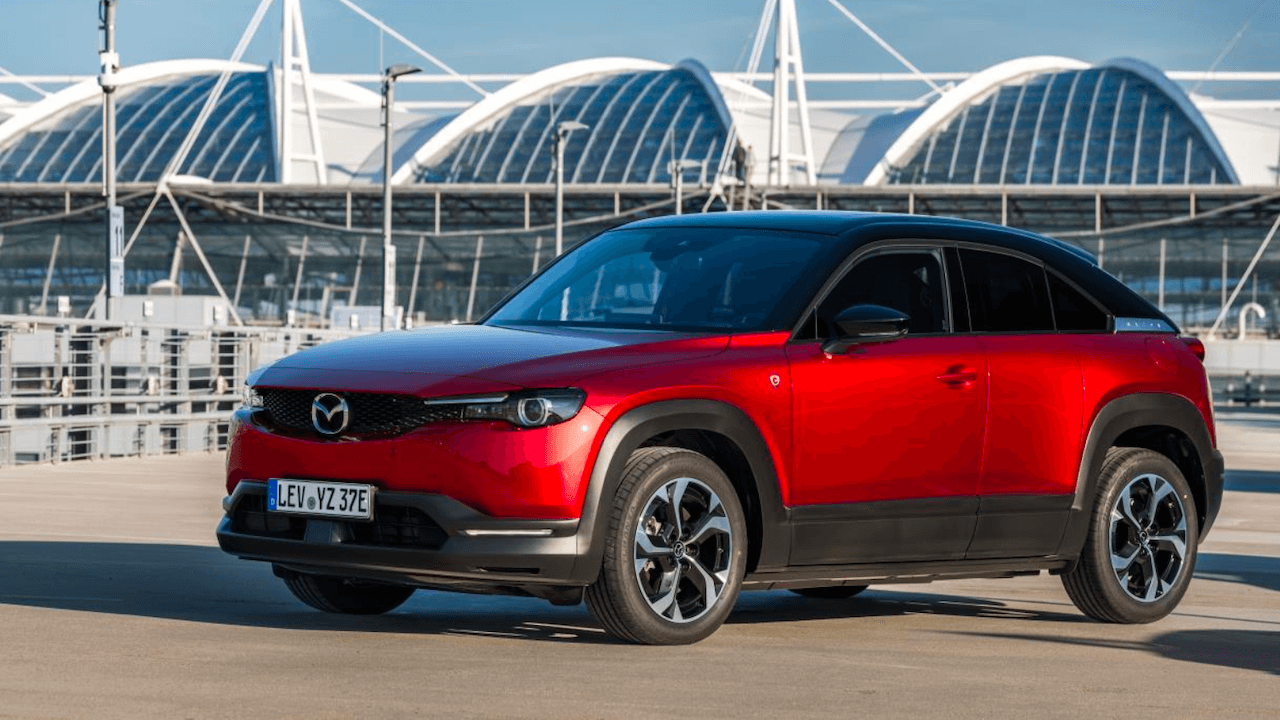In 2020, Mazda MX-30 it was the first electrified vehicle of the Japanese house. Now the MX-30 e-Skyactiv R-EV has been added to the range as a plug-in hybrid, which we tested in a truly special context: with Fjona, on the streets ofIceland. And in the end, what is the response on the Electric Mazda MX-30?
You can see the adventure on the streets ofIceland and an explanation on methanolamong the eFuels in which it invests Mazdaby clicking on the video below.
Mazda MX-30 e-Skyactiv R-EV: the features
The revolutionary MX-30 e-Skyactiv R-EV It offers an incredible 85km of range in all-electric mode, ideal for daily commutes, with the flexibility to use a generator for long-distance journeys. Exactly like what we tried in Iceland, covering 500 km (read to the bottom to find out the consumption and how much we spent).
Mazda made an innovative choice by using a single-rotor 8C 830cc rotary engine as the generator, which delivers a maximum power of 55 kW (75 hp) at 4,500 rpm and is significantly more compact than a reciprocating engine with similar power. The compact electric powertrain is paired with a 17.8 kWh lithium-ion battery and a 50-liter fuel tank, creating a unique series plug-in hybrid system with an extremely competitive total range.
The Mazda MX-30 e-Skyactiv R-EV plug-in electric car has three driving modes: Normal, EV and Charge. Normal mode uses electric drive with the rotary engine idle, provided the battery is sufficiently charged. EV mode allows exclusive use of electric traction until the battery is completely discharged, activating the rotary motor only under intense acceleration, while charging mode is useful for preserving sufficient charge for use in EV mode at later stages of the journey or to power external devices via the V2L (Vehicle-to-Load) function.
Finally, the e-GVC Plus ride control technology offers a comfortable driving experience, with great grip on the road, fluid vehicle movements, excellent controllability and intuitive handling. The regenerative friction braking system monitors brake pedal use to ensure efficient energy regeneration, while also contributing to the driver’s desired braking force.
Methanol technology
With the MX-30, Mazda continues its commitment, which began in 2021, in research on eFuelthat is, all those alternative fuels such as methanol that reduce emissions and impact on the environment.
The eFuelas the methanolare synthetic fuels with zero climate impact, an integral part of the strategy Mazda within the eFuel Alliance. These fuels are produced from renewable energy sources, using electricity from sources such as solar, wind, hydro or geothermal, together with carbon dioxide (e.g. from the air).
The production process, known as “power-to-liquid,” begins with the electrolysis of desalinated seawater to obtain hydrogen. Subsequently, hydrogen is synthesized with carbon dioxide through the Fischer-Tropsch process, developed in Germany in 1925, creating a liquid fuel with zero climate impact.
This methanol It can be used as an additive or pure substitute in conventional fuels, such as gasoline, diesel or heating oil, with the flexibility of drop-in from 1 to 100%. The eFuelEmitting significantly less nitrogen oxide and particulate matter than conventional fuels, they offer a cost-effective alternative that is easy to distribute via existing infrastructure.
The applicability of eFuel to various means of transport, from automobiles to heavy vehicles, airplanes and ships, making them a versatile solution. They can also replace crude oil in the chemical industry. Initiatives such as the George Olah eFuel plant in Iceland successfully demonstrate the commerciality of the process, producing climate-neutral e-methanol since 2016.
Despite the energy challenges in many European countries, eFuels, including the methanol, represent an accessible and sustainable solution, which can be imported economically. In the medium term, the cost of production is expected to drop to around 1 euro per litre, ensuring accessibility for consumers and contributing to the transition towards energy sources with zero climate impact.

Mazda MX-30 on the streets of Iceland
L’Iceland it is a legendary land, in many ways still young and new, full of climatic surprises and breathtaking landscapes. And this is where we tried the new one Mazda MX-30 e-Skyactiv R-EV electric al methanol, amidst road conditions that, with their unique variability, reflect the speed with which the weather can transform from rain to snow and ice.
With the MX-30 e-Skyactiv R-EV elettrica, equipped with studded tires to ensure safety on any terrain, we tried one of the two epic routes included in this experience, both heading north from Reykjavik via the iconic 1,332km Route 1. Route 1 is the road that circumnavigates the island and took us through unique landscapes and two fjords, through a tunnel and a bridge, which then gave way to spectacular scenery sculpted by glaciers.
How much does the new Mazda consume in the end?
The engineering theories of Mazda they are also reflected in the consumption management of the MX-30. While traveling in IcelandFjona also showed what the consumption and mileage were on board the e-Skyactiv R-EVequipped with a rotary petrol engine which powers the battery cell.
Meanwhile, it is worth pointing out that the engineering theory and the attention to achieving maximum consumption efficiency have meant that the new Mazda MX-30 e-Skyactiv R-EV methanol electric has a maximum speed limit of 140 km/h. A threshold that may seem bizarre to many motorists, but which is designed precisely to optimize fuel and battery consumption.
Battery which, as Fjona also reminds us, supports fast charging – reaching a full charge in about twenty minutes – up to 35 kw. Not a small detail, if you consider that the Starting price of the Mazda MX-30 plug-in hybrid is around 37,000 euros.
So what were the consumption of our trip to Iceland? Summing up, consumption amounts to around 14 km with one liter on petrol and 5 km/kwh on electric at a medium-high speed, between 80 and 100 km/h.

















Leave a Reply
View Comments